Table of Contents
ToggleChoosing the right intake is the first important step in your study abroad journey. It shapes your application timeline, course availability, and transition to university life in Australia, where world-class education meets a vibrant, global student community.
Australia stands out for its flexible academic calendar, offering three primary admission cycles: February, July, and November. Whether you aim to dive into bustling city campuses in February, prefer a mid-year fresh start, or seek a unique November entry tailored to your ambitions, understanding the nuances of each intake is the key to maximising your opportunities.
This blog highlights the prominent intakes in Australia for international students, including their advantages and limitations, to help make an informed decision that suits their academic and personal needs.
Understanding Intakes in Australia for International Students
February Intake (Semester 1)
The February intake is widely regarded as the main entry period for students at Australian universities. Offering the broadest array of programs and the richest set of opportunities for scholarships and career development, this intake attracts the largest cohort of both undergraduate and postgraduate candidates. Its alignment with the academic calendar and Australia’s major hiring seasons further enhances opportunities for study and work.
Key Dates and Application Deadlines for February 2026:
| Aspect | Details for February Intake 2026 |
| Application Opens | July 2025 |
| Application Deadlines | July 2025 – November 2025 |
| Application Closes | November – December 2025 |
| Classes Commence | Late January – Early February 2026 |
| Semester Ends | May – June 2026 |
Benefits of February Intake in Australia
- Broad Course Offering: Almost all bachelor’s, master’s, and doctoral courses are available, maximising programme flexibility for students.
- More Scholarship Opportunities: Access to the largest number of scholarships and financial aid programs.
- Internship and Job Market Alignment: Facilitates entry into Australia’s recruitment and internship cycles, supporting future career growth.
- Extensive Peer Network: With the highest student enrollment, campus life is vibrant, and networking opportunities abound.
- Sufficient Preparation Time: Students graduating the preceding year have adequate time to complete applications and plan their transition.
Best Suited For
The February intake is ideal for students who have completed their previous academic qualifications on time and want to begin their studies in sync with the start of the Australian academic year. It especially suits those seeking the widest choice of programs, aiming for scholarships and financial aid, and desiring an immersive campus experience with plentiful opportunities for networking, internships, and employment.
July Intake (Semester 2)
The July intake serves as the secondary entry period for Australian universities. It is favoured by students who require additional time for applications, visa preparation, or exam results, and provides access to a significant range of undergraduate, postgraduate, and select specialised programs. While slightly fewer courses are on offer compared to February, this intake is supported by many top universities and presents a valuable second chance to start studies within the same year.
Key Dates and Application Deadlines for July 2026:
| Aspect | Details for July Intake 2026 |
| Application Opens | December 2025 – February 2026 |
| Application Deadlines | March – May 2026 |
| Application Closes | May – June 2026 |
| Classes Commence | Late July – Early August 2026 |
| Semester Ends | November 2026 |
Benefits of July Intake in Australia:
- Flexible Start: Allows students extra time for academic results, application documentation, and visa approvals.
- Wide Range of Options: Many undergraduate and master’s courses remain open for this intake at major universities.
- Avoids Summer Heat: Begins during the cooler months in Australia, which some students find preferable.
- Smaller Cohort Size: May offer more personalised attention with slightly reduced campus competition.
- Second Opportunity: Ideal for those who missed the February intake or graduated late.
Best Suited For:
The July intake is best suited for students who seek a mid-year start due to delays in prior studies, need more time to prepare their application, or prefer to avoid the peak of the Australian summer. It’s ideal for those wanting access to reputable programs without waiting an extra academic year.
November Intake (Semester 3)
The November intake is the least common session at Australian universities, primarily catering to students who need maximum flexibility or are targeting specific programs, particularly select master’s and MBA courses. Available at a limited number of institutions, this intake is designed for individuals who have missed earlier admissions or require a unique academic schedule.
Key Dates and Application Deadlines for November 2026:
| Aspect | Details for November Intake 2026 |
| Application Opens | May – June 2026 |
| Application Deadlines | June – August 2026 |
| Application Closes | August – September 2026 |
| Classes Commence | Late October – Early November 2026 |
| Semester Ends | February – March 2027 |
Benefits of November Intake in Australia:
- Flexible Timing: Accommodates students with non-traditional schedules or those seeking to avoid long waiting periods.
- Lower Competition: Due to smaller applicant pools, the intake offers a less competitive entry environment.
- Niche Course Availability: Suits those seeking specialised postgraduate programs or accelerated courses unavailable in other intakes.
- Fastest Route: Offers an immediate alternative for students unable to apply in earlier intakes.
Best Suited For:
The November intake is ideal for students looking for quick course initiation, those who missed earlier intakes, and applicants pursuing niche, specialised, or fast-track programs offered only in this period. It’s especially suitable for students whose academic, personal, or professional circumstances demand flexible start dates.
Australia Master’s and MBA Intake
Pursuing a master’s degree or MBA in Australia means selecting from some of the world’s most respected programs, many designed with flexibility in mind to suit a range of academic and professional goals. These intakes largely follow the primary university cycles, but often come with added choices for when and how you begin your studies.
Key Intake Patterns for Master’s and MBA Programs
- February and July Intakes:
Most Australian universities open applications for master’s and MBA programs during the standard February and July intakes, offering the widest variety of courses and the greatest access to scholarships, campus resources, and career services. - November and Additional Intakes:
Select MBAs and specialised master’s courses are available in November, catering to applicants who require an alternative academic calendar or faster entry. Some leading business schools provide even more flexibility, with multiple start dates or rolling admissions throughout the year to accommodate working professionals or those with unique timing needs.
Key Dates and Application Deadlines for 2026
| Aspect | Typical Timeline (Masters & MBA) |
| Application Opens | ~6–8 months before preferred intake (varies) |
| Application Deadlines | February Intake: July–Nov 2025 |
| July Intake: Dec 2025–May 2026 | |
| November Intake: May–Aug 2026 | |
| Classes Commence | Feb, July, or Nov 2026 (university-specific) |
| Semester Ends | Aligned with respective intake cycle |
Benefits of Australia’s Masters and MBA Intakes:
- Multiple Start Dates: This feature is especially beneficial for MBA programs, allowing you to select the session that best suits your professional or personal schedule.
- Wide Programme Selection: Extensive offerings during February and July; select MBAs and fast-track courses available in November.
- Career-Ready Focus: Many programs are scheduled in line with Australian recruitment seasons, maximising internship and job opportunities.
- Scholarships and Financial Aid: Generous support for high-achieving students, particularly during prominent intakes.
Best Suited For:
The flexible intake structure is ideal for:
- Working Professionals: Those seeking to balance continued employment with further study or seeking minimal interruption to their careers.
- International Students: Candidates who need more time for documentation, visa processing, or those applying late in the year.
- Those Requiring Flexible Timelines: Students with personal commitments who benefit from alternative or multiple start months.
- Focused Career Changers: Especially relevant for MBAs seeking immediate or accelerated programme starts in line with career shifts or promotions.
Advantages of Multiple Intakes in Australia
Australia’s three intake systems provide international students with significant benefits beyond simple academic scheduling. Here are the key advantages:
- More Opportunities to Start
Having three intakes annually means students do not have to wait an entire year if they miss one deadline. This flexibility facilitates entry into Australian education at multiple points during the year.
- Course Availability and Flexibility
Among the intakes, February offers the widest variety of courses, followed by July, with November intake providing limited but niche programmes, often for master’s and MBA courses.
- Diverse Student Community
Intakes attract students worldwide, fostering multicultural environments that enrich learning and social experiences.
- Better Access to Support Services
Orientation, academic advising, and student services are tailored to intake start dates, ensuring that new students have the resources they need to adjust quickly.
- Alignment with Job and Internship Markets
Starting in February or July aligns well with Australia’s hiring periods, making it easier for students to find internships and part-time jobs relevant to their studies.
- Time to Adapt
Multiple entry points allow students time to adjust to the culture, climate, and lifestyle of Australia before fully committing to their studies.
How to Choose the Right Intake in Australia?
Selecting the appropriate intake in Australia requires careful consideration of multiple factors beyond just the start date.
Course Availability
Not all courses are available in every intake. The February intake generally offers the most extensive range of programmes at bachelor’s, master’s, and MBA levels. The July intake supports many courses, but fewer than the February intake. Meanwhile, the November intake in Australia is limited, often focusing on specific Master’s or MBA programmes at select universities.
Application Deadline
Each intake has distinct deadlines, and missing these can delay admission by an entire year. For example:
| Intake | Typical Application Deadline |
| February Intake | August to November (previous year) |
| July Intake | March to May |
| November Intake | June to August |
Deadlines account for document verification, visa processing, and scholarship considerations.
Preparation Time
Adequate preparation time is essential and includes:
- Clearing language proficiency tests such as IELTS, TOEFL, or PTE. Note that test scores generally must be from within two years of the intake start.
- Completing any required entrance exams (GRE, GMAT for MBA or postgraduate programmes).
- Gathering and certifying academic transcripts, letters of recommendation, and a Statement of Purpose.
- Applying for and obtaining the student visa, which can take 6 to 8 weeks or more, depending on season and individual circumstances.
Students applying for the February intake typically start preparations almost a year in advance, while those targeting July or November intakes may have a slightly compressed timeline but should still allow at least 4 – 6 months.
Personal Circumstances
Your choice may depend on:
- Academic calendar alignment with previous studies.
- Financial planning and availability of funds.
- Health and personal commitments.
- Preferred seasonal climate and lifestyle transition. For instance, November intake starts near Australian summer, which may be preferable for some but challenging for others.
- Work commitments or internship schedules.
Employment Opportunities
Students planning to work part-time during their studies should consider the timing of intakes. Starting in February or July aligns better with Australia’s job market and internship cycles, as employers often have peak recruitment periods corresponding with these semesters.
Note: International student visa conditions allow work of up to 40 hours a fortnight during study periods, but early enrolment gives you more time to explore suitable opportunities.
Competitive Nature of Intake
- February intake: Most competitive due to highest demand among international students.
- July intake: Moderate competition.
- November intake: Less competitive but with limited course choices and fewer university options.
Timeline and Prep Strategy for Intakes in Australia
| Preparation Step | Description | Recommended Timeline |
| Research Thoroughly | Explore universities, programmes, and which intakes courses are offered in (February, July, November). | Begin 10-12 months before intake |
| Start Early | Collect academic transcripts, prepare for English tests (IELTS, TOEFL), and gather financial documents. | 4 to 6 months before application deadline |
| Apply for Scholarships Early | Research scholarships, which often have separate, earlier deadlines than applications. | 6 to 8 months before intake |
| Organise Visa Documents | Prepare required visa forms and supporting documents; submit visa application early. | 3-5 months before |
| Plan Finances & Accommodation | Budget tuition, living expenses, and secure accommodation aligned with intake timelines. | 1 to 2 months before arrival |
| Prepare for Cultural Adjustment | Engage in university orientation, online resources, and community forums to understand academic culture. | Weeks before classes commence |
Mistakes To Avoid While Applying to Australian Universities
Indian students form a significant portion of the international student body in Australia. To ensure a hassle-free admission process, avoid the following errors:
- Missing Application Deadlines
Failing to meet intake deadlines (especially for February and July) can result in a one-year delay in admission. Note that universities in Australia with November intakes have earlier mid-year deadlines.
- Ignoring Intake-Specific Course Availability
Applying for a course not offered in a particular intake may result in rejection; check course intakes carefully before applying.
- Incomplete or Incorrect Documentation
Submit all academic records, financial proof, and language scores correctly to avoid visa or admission issues.
- Not Applying for Scholarships on Time
Many Indian students miss out on scholarships due to late applications. Keep track of scholarship timelines separately.
- Overlooking Visa Application Time
Visa processing delays impact your ability to start classes on time. Allow adequate buffer time before your course commences.
- Choosing an Intake Solely Based on Peer Decisions
Decide based on your preparedness and course availability, not simply because friends choose a particular intake.
Choosing the right intakes in Australia for international students is as important as selecting the programme or university. With multiple intakes, primarily in February, July, and November, Australia offers flexibility, increased admission chances, and better alignment with career goals.
Indian students and other international applicants must carefully research Australia admission intakes, understand timelines, and prepare early to avoid common pitfalls. Whether it’s enrolling in an MBA intake in Australia or pursuing a master’s degree, knowing the unique aspects of each intake ensures a smooth start to a rewarding educational experience.
If you’re still confused about what intake will be the most suitable for you, reach out to UniScholars to get all your answers and direction to move forward smoothly.
FAQs
- How many intakes are there in Australian universities, and which months do they fall in?
Australian universities typically have three main intakes: February (Semester 1), July (Semester 2), and November (Semester 3), with February being the largest and most popular intake.
- Which intake is best to apply for if I want to study in Australia?
The February intake is usually the best choice because it offers the most course options, scholarships, and student support. The July intake is a good backup if you miss February deadlines, and the November intake is for late applications or special programs like some master’s and MBA courses.
- When should I apply to Australian universities for each intake?
- For February intake, apply between July and November 2025.
- For July intake, apply from March to May 2026.
- For November intake, apply between June and August 2026.
Deadlines can vary by university and course, so check each school’s website.
- What documents do I need to prepare for my Australian university application?
You will need:
- Academic transcripts or mark sheets
- English test scores (IELTS, TOEFL, or PTE)
- Statement of Purpose (SOP)
- Letters of recommendation
- Proof of financial support
- A valid passport
Start preparing your documents about 4 to 6 months before your application deadline.
- Can I work part-time if I join the November intake?
International students can work part-time in all intakes. However, starting in February or July often gives better chances to find part-time jobs and internships because these intakes align with Australia’s main work and internship cycles. November intake has fewer students and may mean fewer job opportunities during the semester.
















1 thought on “Top PGDM Courses In Canada: Universities & Eligibility”
I have done Bachelor’s in Culinary Arts from India and completed my graduation in the year 2022 .I am 22 years old. After graduation, I have done 1 year paid internship from USA .Now, I would like to take occupational experience and learn culinary skills and also do masters in Culinary arts.How can I find the college n best course / country where I can persue studying further